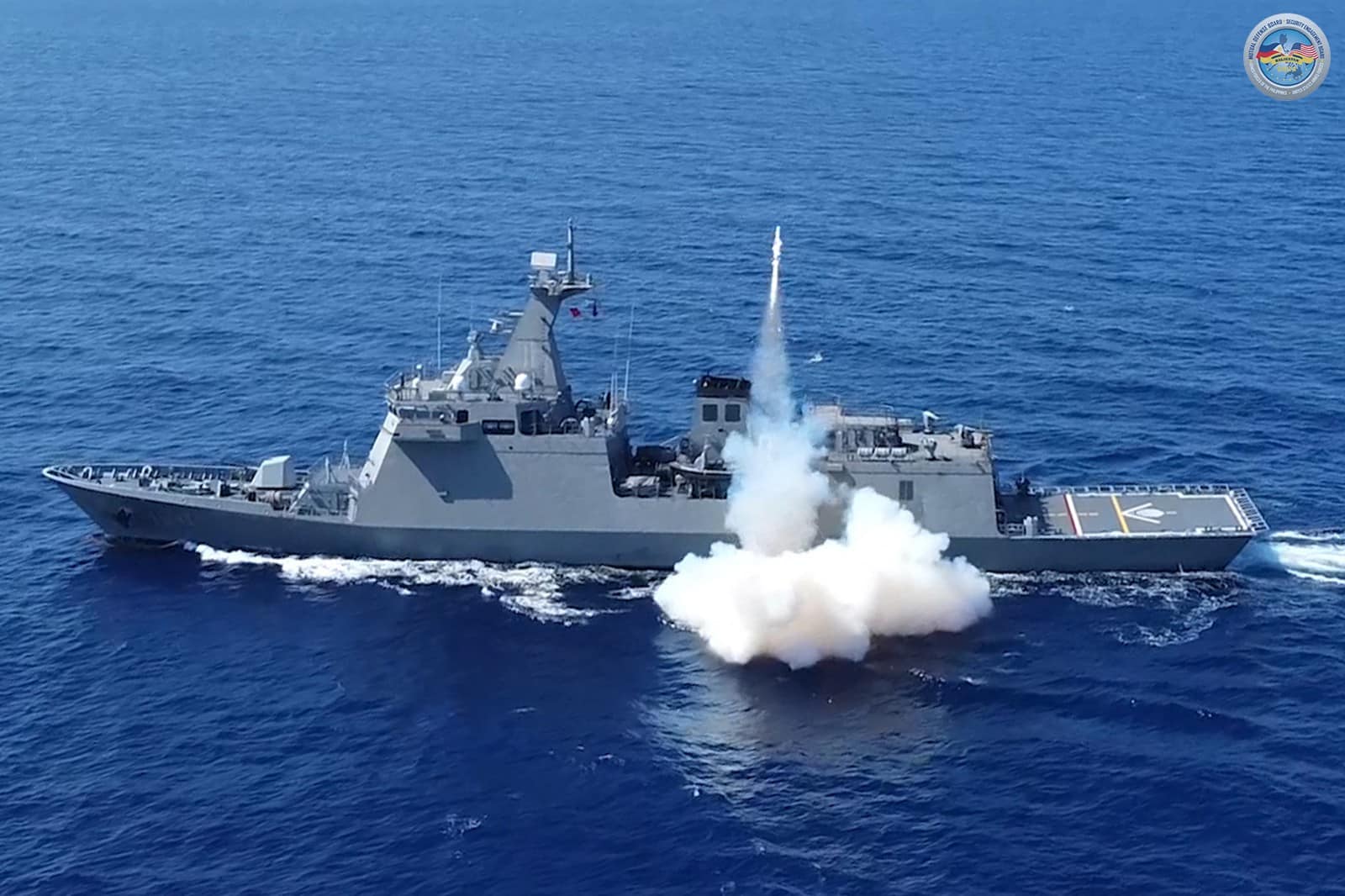‘Shared adversity’, new weapons as PH, US forces launch ‘Balikatan’

In this handout photo from the Armed Forces of the Philippines (AFP) taken and received on May 8, 2024, shows the BRP Jose Rizal launching a C-Star Surface to Surface Anti-Ship Missile directed towards a mock enemy target during the maritime strike exercise as part of the joint US-Philippines annual military Balikatan drills in Laoag, on Luzon island’s northwest coast. FILE PHOTO/Agence France-Presse
MANILA, Philippines — The Philippine and US militaries on Monday kicked off three weeks of joint exercises that will simulate a “full-scale battle scenario”, as the two allies seek to deter to Beijing’s ambitions in the disputed West Philippine Sea.
Around 17,000 troops are expected to take part in the annual “Balikatan”, or “shoulder to shoulder” drills, which for the first time will include an integrated air and missile defense simulation to be attended by President Ferdinand Marcos Jr.
Sophisticated US weapons including the “highly mobile” NMESIS anti-ship missile system will also be deployed, including near a crucial chokepoint in the waters separating the northern Philippines from self-ruled Taiwan.
READ: PH, US kick off annual Balikatan war games
“We will demonstrate not just our will to uphold our mutual defense treaty in existence since 1951 but our matchless capability to do so,” US Marine Corps Lieutenant General James Glynn said Monday at the Balikatan opening ceremony in Manila.
“Nothing builds bonds more quickly than shared adversity,” he added, without specifying a common threat.
Major General Francisco Lorenzo added the exercises would reinforce the country’s ability to address “contemporary security challenges”.
The Philippines has been engaged in months of confrontations with Beijing over disputed areas of the West Philippine Sea.
READ: Hegseth: US deploying more advanced assets to PH for Balikatan
It has steadily deepened defense cooperation with treaty ally the United States since Marcos took office in 2022 and began pushing back on China’s sweeping claims to the crucial waterway.
During a recent visit to Manila, US Defense Secretary Pete Hegseth said Washington was “doubling down” on the alliance.
“Deterrence is necessary around the world, but specifically in this region, in your country — considering the threats from the Communist Chinese,” he said in late March.
While the bulk of visiting forces involved in Balikatan will be from the United States, countries including Australia and Japan are sending smaller contingents.
‘More missile systems’
Last year’s Balikatan featured tests of the US Typhon mid-range missile system, which was left behind following the exercises.
The Philippine Army subsequently said it was planning to acquire the Typhon, sparking warnings from China of a regional “arms race”.
Chief of Staff Romeo Brawner last month said the Philippines was indeed looking to upgrade its arsenal.
“We are looking at acquiring more missile systems to complete the integration of our air and missile defence,” he told New Delhi’s Raisina Dialogue, adding more warships and fighter jets were also being sought.
On April 2, the United States said it had approved the possible sale of $5.58 billion in long-coveted F-16 fighter jets to the Philippines, though Manila said the deal was “still in the negotiation phase”.
A week later, the Philippines took possession of the first of two corvette-class warships with “advanced weapons and radar systems” acquired in a deal with South Korea’s Hyundai Heavy Industries.
‘Inevitably’ involved
Given the Philippines’ proximity to Taiwan and its surrounding waters, Manila’s cooperation would be crucial in the event of any US conflict with China.
On April 1, as Chinese ships and warplanes surrounded the self-ruled island in a simulated blockade, Brawner said his country would “inevitably” be involved should the democracy be invaded.
China considers Taiwan part of its sovereign territory and has vowed to one day bring it under its control.
While Manila later said Brawner’s comments were primarily referencing efforts to retrieve Filipino workers in Taiwan, its Enhanced Defense Cooperation Agreement with Washington gives US forces access to nine bases in the country.
Two of those are located in Luzon’s northernmost Cagayan province, which will host live-fire drills during Balikatan this year.
For comprehensive coverage, in-depth analysis, visit our special page for West Philippine Sea updates. Stay informed with articles, videos, and expert opinions.


















